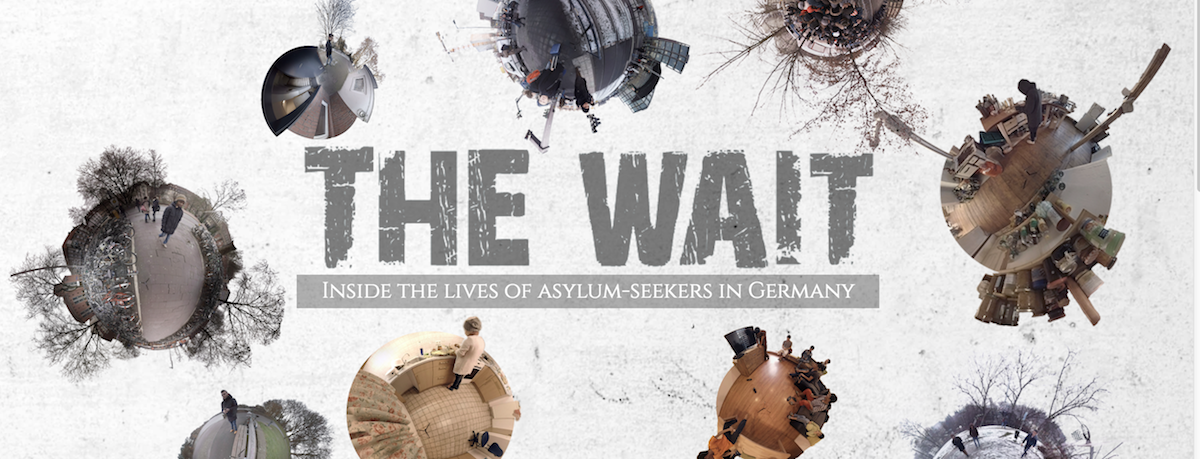Lakshmi Sarah and Melissa Bosworth began paying attention to the stories of refugees and migrants after 71 of them died in the back of a truck bound for Austria.
The two, who were both students at the University of California, Berkeley’s Graduate School of Journalism, were overwhelmed by all the numbers they heard: this many died, this many crossed, this much was spent, and on and on.
What was missing, they said, were the real stories of individuals. Both journalists had previously lived in Germany during their studies. So they decided to take on what would become the school’s first big 360-degree video project. Neither had yet to tell a story this way, but they thought the medium itself had the potential to be a powerful storytelling tool.
The result is “The Wait”, which takes the large issue of migrants and refugees in Europe and zooms way into the lives of nine people waiting for asylum in Germany. (If you haven’t yet explored 360-degree video, simply use your cursor in the video to look around.)
360-degree video — and its cousin, virtual reality — are becoming more common tools for newsrooms, including The New York Times, The Wall Street Journal and the Des Moines Register.
In January, Sarah and Bosworth started to join them with a three-week trip to Germany. For “The Wait,” which would become their master’s project, they traveled to Muenster, Berlin, Munich, Osnabrück, Leipzig and Passau. Originally, they planned to feature three people. But the stories from the nine people they interviewed were so different, they each made their way into the project.
Throughout the process, they learned as they went and created a few resource pages for other journalists on rigs, gear, software and other journalists producing similar work.
At one train station, the perspective was too low. In another shot, light-colored walls in the background were difficult to stitch together in post-production.
“Almost with every single shot, we learned something,” Sarah said.
David Cohn, a senior director at Advance Publications, teaches a new media storytelling class at U.C. Berkeley. He advised Sarah, who was in his class, to use 360-degree video for a specific reason — not just because it’s available.
The result, he said, is a project that blends a new tool with old practices.
“This isn’t just a matter of a shiny new thing,” he said. “This is a new storytelling tool applied with traditional boots-on-the-ground reporting, and I think they married the two together very nicely.”
By using 360-degree video, Cohn said, they made the story tactile and personal. That intent is signaled by the project’s design, too, he said, which invites people into nine tiny worlds.

Fellow grad student Fan Fei joined the team in production. The project, which was launched in May, features people from Iran, Syria, Afghanistan and Guinea with 360-degree videos, traditional videos and stories. The 360-degree videos offer a look into kitchens and classrooms, crowded dorms and apartments, on a train ride and into a long, chilly wait for resources. As viewers look around, the subjects talk about how they came to Germany and what life has been like since.
Sarah and Bosworth were interested in experimenting with 360-degree video both because it’s an emerging technology and because the potential it has for building empathy with audiences.
The team behind the project has graduated, and Bosworth and Sarah have started a production company aimed at creating immersive video.
By zooming in, Sarah learned how each story is different, and that it’s impossible to compare what people are going through.
“In the end, I think it is just a question of humanity,” she said. “No one deserves to wait in line for days on end for basic services like Mohammed and Adriel were forced to in Berlin. I feel more committed to attempting to tell these stories with the hope that these will eventually lead to policy change. But it is also overwhelming, because these are only nine of over a million stories.”
While the filming took place in January, the day-to-day lives of the men and women profiled haven’t changed that much. And more refugees come into the country every day, she said.
Now, at least, nine of them are no longer just numbers.






